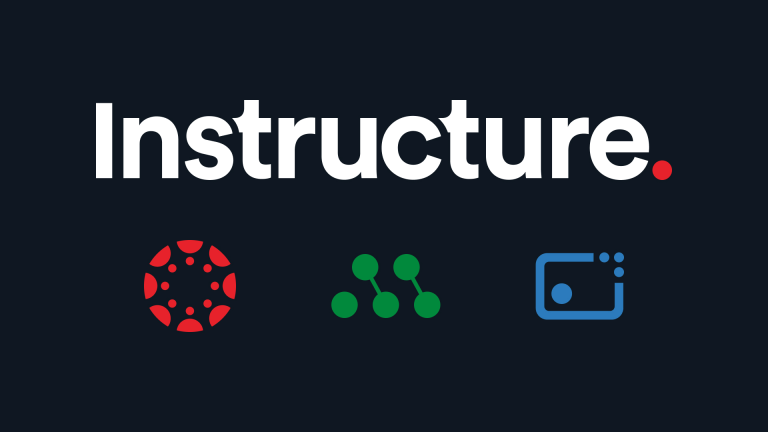When Instructure released the State of Learning and Readiness report during EDUCAUSE 2025, one message stood out: most people don’t feel ready for the future of work. According to the national survey, 70% of employed U.S. adults feel unprepared for today’s workforce, 73% say they don’t feel ready to adapt over the next five years, and 64% plan to change jobs within two years.
That data framed a timely conversation at our candid roundtable discussion, where academic and technology leaders from institutions including Arizona State University, Columbia University, Indiana University, and Liberty University, met to discuss how higher education can help close the gap.
A wake-up call for higher ed
The report identifies four pillars of readiness as the foundation for a “future-ready” workforce: digital literacy, continuous skills development, adaptability, and a growth mindset. Yet some roundtable participants said those goals can feel out of reach for both students and educators navigating change.
Several speakers highlighted AI as both a disruptor and an opportunity. Ann Todd Leftwich, Ph.D., associate vice president for learning technologies at Indiana University, called it “a Trojan horse moment,” forcing institutions to re-examine their value in a world where content is everywhere. Johanna Schlinkert, associate director of learning technology at Arizona State University, emphasized that technology should “not replace the human connection,” but rather free educators to focus on relationships and mentoring.
Across the table, participants agreed that the real test for higher education isn’t whether it can adopt AI, but whether it can use it to make learning more personal, ethical, and relevant.
The readiness gap in real terms
The State of Learning and Readiness report reveals that while most workers want to learn, they often don’t know which skills or credentials are actually valued. Nearly nine in ten say more training would help their careers, and 60% want to upskill to move forward.
That uncertainty, several participants noted, mirrors what’s happening on campus. Students and faculty alike are grappling with fragmented AI policies, differing expectations across courses, and limited clarity around what “AI readiness” really means.
“Students experience a lot of whiplash between, ‘you can use AI here, but you can’t use it there,’” said Ann Todd Leftwich. “If we view AI as really a fundamental tool of agency, then institutions have to think about the student journey, not just individual courses.”
Connie Johnson, Ed.D., provost and chief academic officer at Colorado Technical University, noted that the challenge extends beyond academia. “We don’t even know what some of these disciplines will look like in the workforce,” she said. “The future is moving so quickly that even if we were lightning fast, the pavement hasn’t been laid yet. The question is how we prepare students to drive on it.”
Readiness in action
Some institutions represented in the room are already experimenting with ways to put readiness into practice. Indiana University recently deployed “GenAI 101,” a free course available to students, faculty, staff, and alumni. The course has already attracted over 100,000 participants, offering a model for low-barrier AI literacy initiatives.
At Arizona State University, the Create AI Builders initiative enables faculty to design custom teaching tools and share best practices across a campus-wide community.
“It’s been inspiring to watch how faculty help each other, asking questions, sharing solutions, and building confidence together,” said Johanna Schlinkert. “That spirit of collaboration is what helps innovation scale.”
Both examples highlight the kind of agile, community-driven experimentation that participants said will define the next era of learning.
Bridging education and work
A recurring theme in both the report and the discussion was the need for higher education to align more closely with industry. Participants explored how digital credentials and microcredentials could help learners demonstrate skills in real time, but only if those signals are trusted.
Several agreed that the badge itself matters less than external recognition. “For many learners, earning a badge isn’t just about validation,” Matthew Zealand, senior executive director, business transformation and strategic planning at Liberty University, said. “It’s about recognizing your own progress, and feeling motivated to keep going.”
A shared responsibility
For Instructure, the report’s message is clear: Readiness is a collective effort. Individuals bring curiosity and initiative, organizations provide opportunities and guidance, and educators connect learning with purpose.
The EDUCAUSE roundtable emphasized that these initiatives are already underway, but closing the gap will require sustained collaboration and shared accountability.
“Students are already using AI, whether we turn it on or not,” said David Comroe, associate vice president and CIO for TCIT at Columbia University. “Our role now is to make sure they understand how to use it well.”
Continuing the conversation
The State of Learning and Readiness report marks the beginning of a broader dialogue. The next step is turning insight into action, through shared learning, collaboration, and continued innovation in how we teach and prepare people for what’s next.
Explore the State of Learning and Readiness report to see where education and work are headed, and how we can work together to make readiness real.



